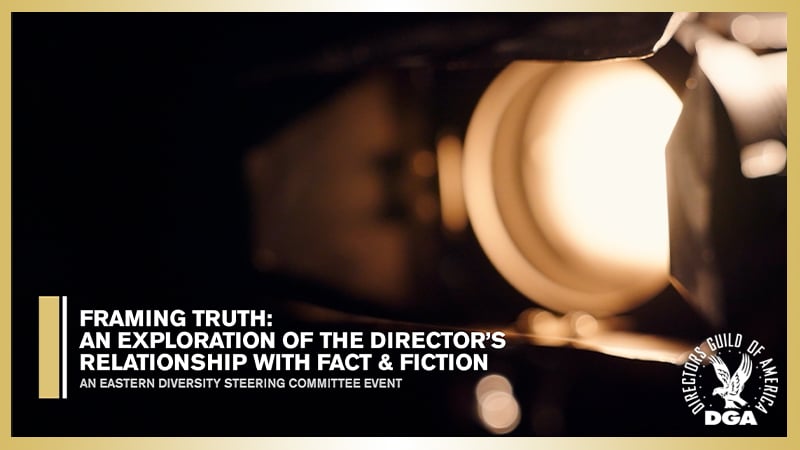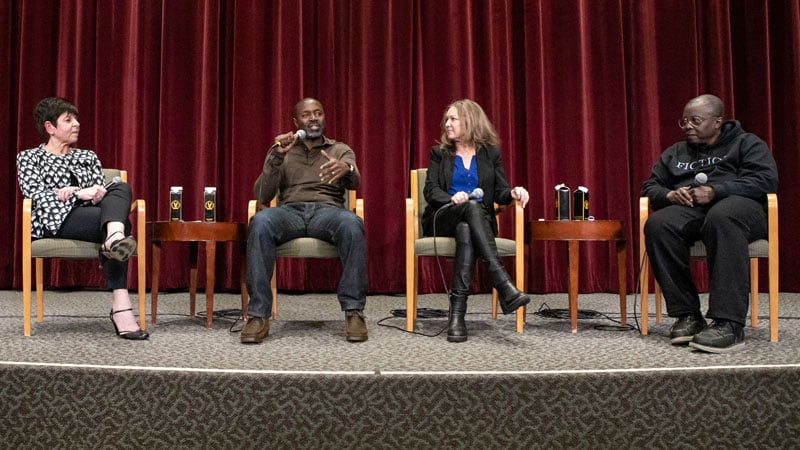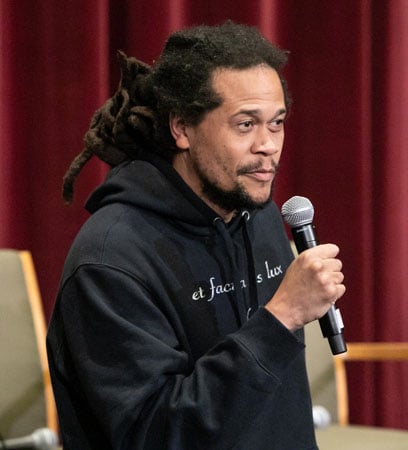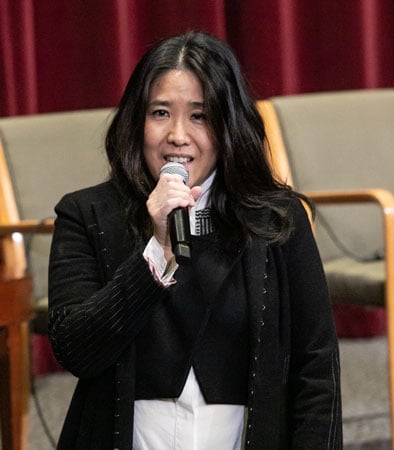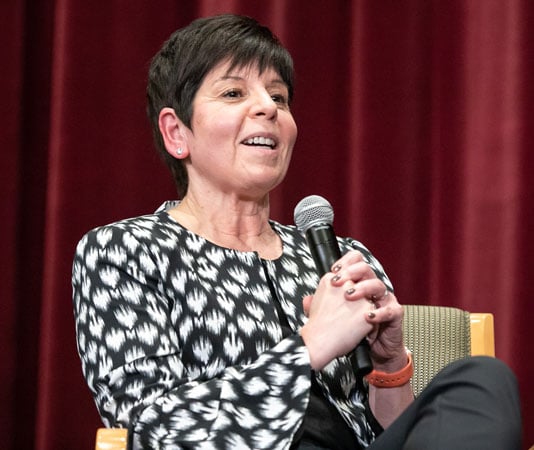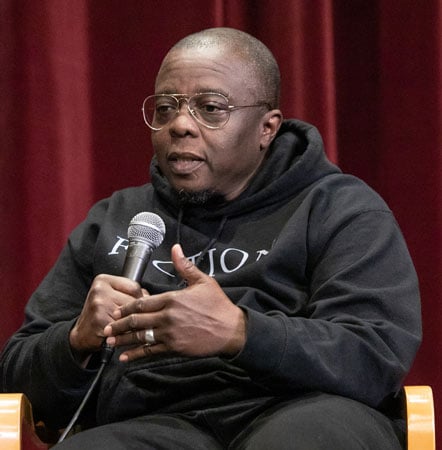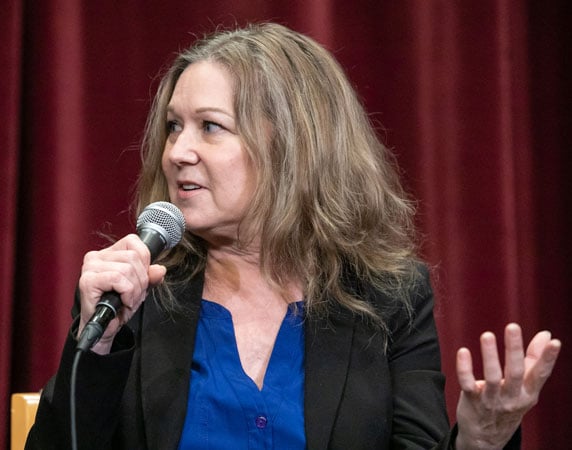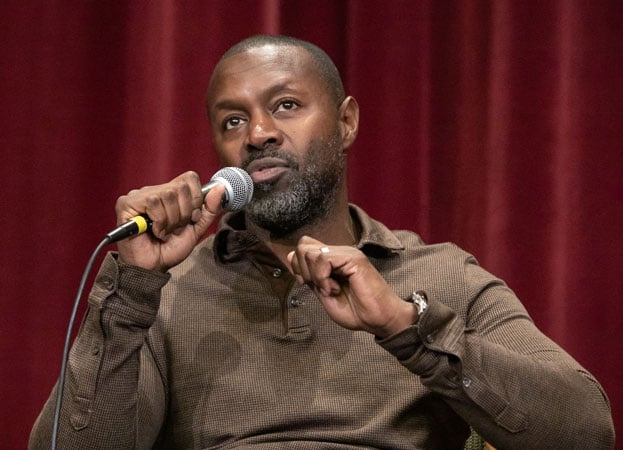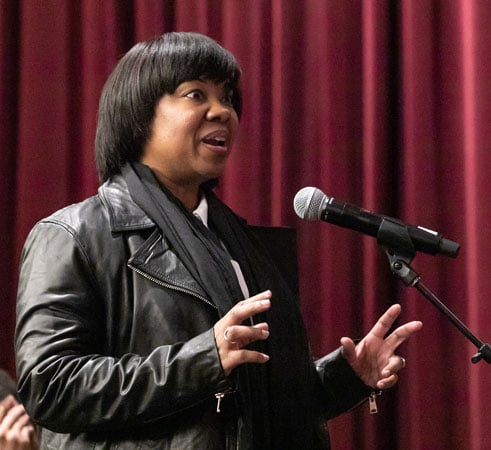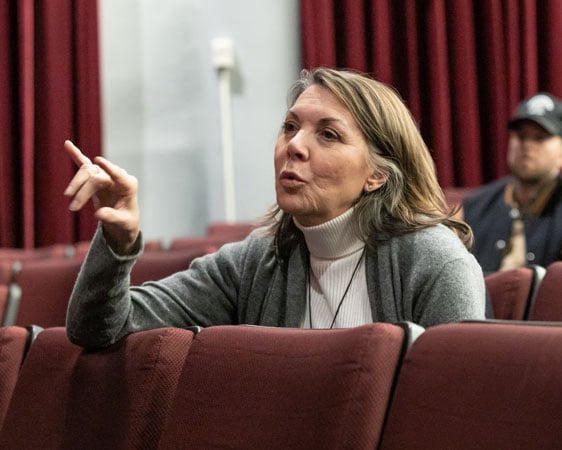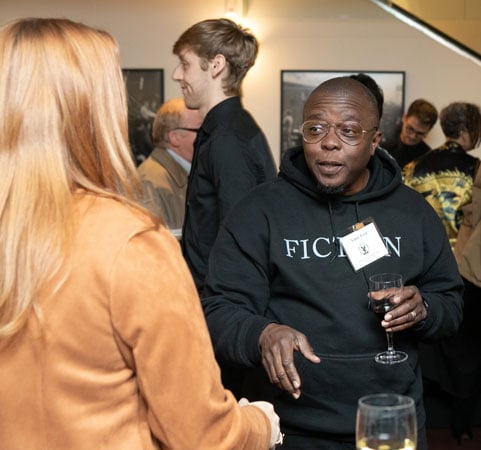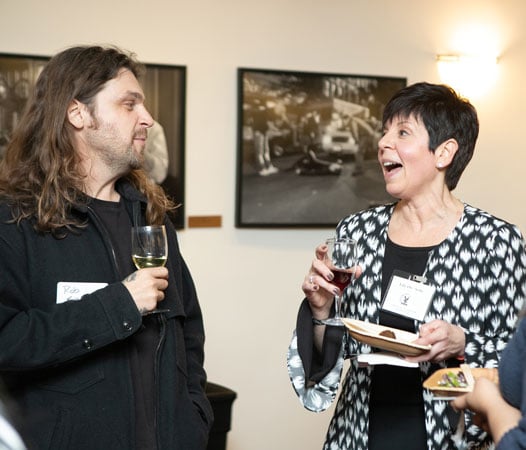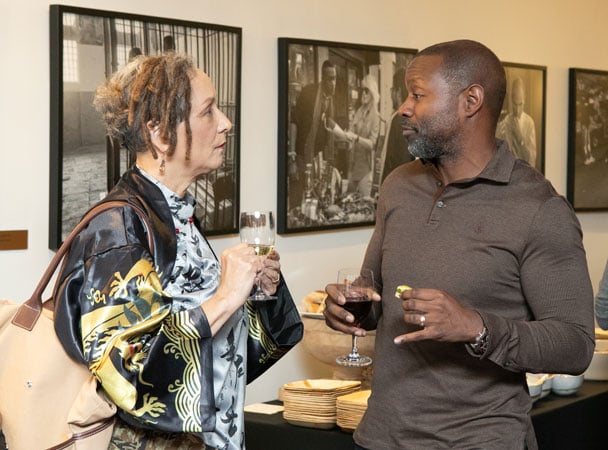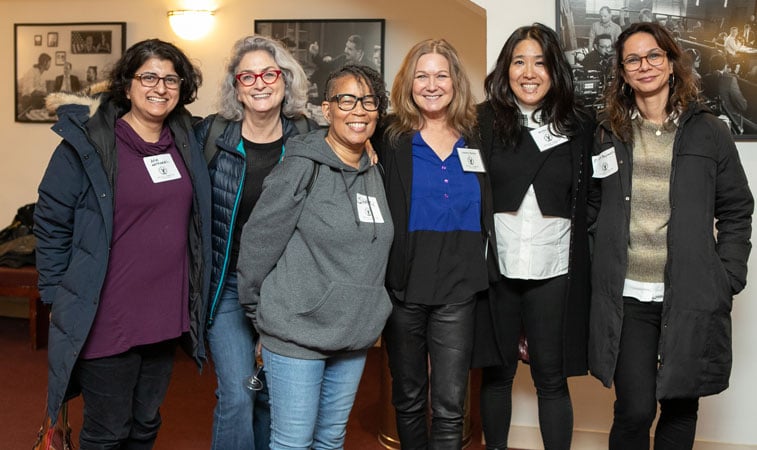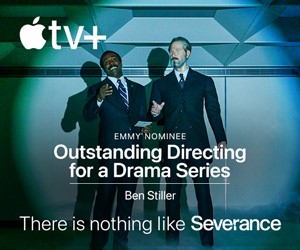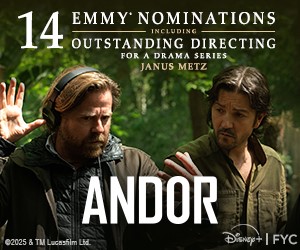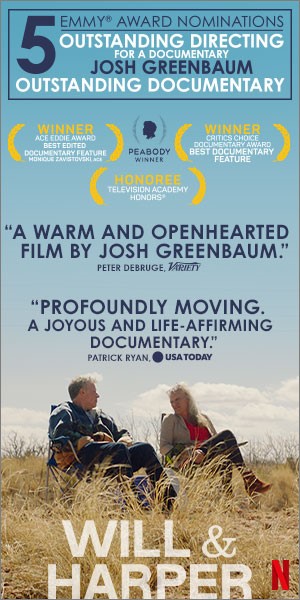As the viewing public becomes inundated with subjective realities and alternative facts, the Director’s role and responsibility in determining how the truth enhances or diminishes story is becoming both increasingly vital and increasingly debatable. On November 23, DGA members gathered in the Guild’s New York theater as a panel of Directors discussed their approach and perspective on handling the truth in both documentaries and narrative work during the Eastern Diversity Steering Committee (EDSC) event, Framing Truth: An Exploration of the Director’s Relationship with Fact & Fiction.
Following welcomes from EDSC co-chairs Bertha Bay-Sa Pan and Seith Mann, DGA Sixth Vice President Lily Olszewski moderated a panel with Directors Yance Ford, Annetta Marion and Rob Hardy and prefaced the conversation asking, “What is a Director’s relationship with truth? You might immediately think of films and tv shows as fiction, even “reality shows” are fiction —remember the apprentice? If you are a documentary filmmaker or you’re directing a project based on real events or if you work in news, there’s a diferent relationship with truth. There is weight to your decisions. What shot you get and how it’s framed. Where the camera is positioned. What part of the story do you include. There is as much weight in what you choose to show and what is outside the frame, wittingly or unwittingly.”
During the conversation, Ford spoke about directing such the personal true story, Strong Island.
“I was driven to do Strong Island because there was a version of my brother left in the public eye. The public eye in this case is like the community I grew up in on Long Island, a very segregated place. After a grand jury returned a neutral bill which basically meant that the person who shot him wouldn’t face criminal charges, there was this perception of my brother that had been left in the ether that he had somehow been responsible for his own death and that he was some kind of out-of-control monster. He turned from some fat guy who can’t qualify to pass a police physical into the Incredible Hulk and had to be subdued by deadly force. So, there was this tension between who I knew my brother to be and who my community knew my brother to be vs who he was being portrayed in the media and in the court process. So, I was really motivated to correct the historical record. I had conversations with people in that film that I hadn’t talked to ever about what they had seen or experienced the night that he died until we were on set. I was just like, ‘If we’re going to have the first conversation, we have to have the first conversation when the camera is rolling because we can’t do it twice.’ We sat down, it was super charged, but as a result of sort of telling people that I was going to give them an opportunity to tell their story and I just literally sat there and just received what they had to say, it created this incredible body of material that I had to choose from, that was literally people testifying in a way for the first time. And these moments — whether it was my sister or my mother or my brother’s best friend — these moments of testimony and the opportunity to give their truth, really provided me with the material that ultimately makes the film so great.”
Marion recalled working with Michael J. Fox as a segment Director on Davis Guggenheim’s documentary, Still: A Michael J. Fox Movie.
“Michael Fox was a part of everything from the very beginning. He, I’m sure, had had many offers for people to tell his story and he felt this was the right time for him. So, we looked at it as a collaboration but we also out of the gate were very clear that we wanted to talk about all of the hard things too. Because I think the beauty is in tough parts of life. His life was so big, so fantastic in the ups and downs. I think the hardest part was fitting this gigantic life and this gigantic story into a 90-minute movie. So, working with him to figure out what we wanted to tell and then making sure that worked with him was really important. From the very beginning he saw clips and screenings of the film when it was nearing completion and that sort of thing. In my experience, there’s usually not a contractual obligation to have your subject sign off. It’s more of a moral and ethical and humanities sort of obligation that we feel. I’ve never had that necessitated by a legal contract, but we do it because we’re human beings and we love our subjects and we want to honor them and celebrate them, not to point out what’s wrong or not.”
Hardy shared the challenges of balancing the true story while still telling a good, interesting story as he had to do on series such as All American and Power Book III: Raising Kanan.
“All American was a lot different because it was a real person, Spencer Paysinger, who grew up in Los Angeles, really went to Beverly High, into the NFL, and [we were] figuring out how to honor him and honor his story but give the writers more creative leeway to be able to fictionalize the story. My relationship with him was about honoring his neighborhood and making sure that Beverly Hills wasn’t placed so high on a pedestal and South Central demonized. So, it was a balance, and he was really helpful with that.” He also stressed how important it was to visit the real places where the stories took place. “It was important in both situations to go to the neighborhoods with the people themselves, see life through their eyes, talk to their friends, go to the same places, so I could kind of understand it. Because the script is here, but you want to be able to do justice to the place. So, for Power it’s more so you want people from Queens, from that era to feel like this is our show. And as a non-West Coast guy, I needed people from LA, specifically South-Central LA to feel like this is my show and you guys represented us from both there and Beverly Hills, so it felt authentic.”
Following the moderated portion of the conversation, the floor was opened up to questions from the audience and the event was followed by a reception.
See video from this event in the gallery below.
About the Panelists:
|
|
|
|
 Annetta Marion Annetta Marion Marion’s directorial credits include episodes of Oprah’s Master Class, Mission Juno and The 47th Floor. She recently produced and second unit directed Davis Guggenheim’s documentary, Still: A Michael J. Fox Movie. A DGA member since 2009, Marion serves on the Eastern Directors Council, as an alternate on the DGA National Board and as a co-chair of the Focus on Women Committee. |
 Lily Olszewski (moderator) Lily Olszewski (moderator) Olszewski is an Emmy-award winning Director of ABC’s Good Morning America, where she has been for more than 10 years. She broke into the industry as an Associate Director at Spanish language TV station KVEA, where she received her first directing opportunity. After working as a Technical Director/Director at the Univision network in Miami she moved to Telemundo as a full time Director. Her other credits include Late Night with Seth Meyers, Watch What Happens Live, Anderson, Today, Donahue, The Jenny McCarthy Show, Latin Billboard Awards Red Carpet, Premios Fox, Time and Again with Jane Pauley, Quite Frankly with Steven A. Smith, MTV’s The Seven and Countdown with Keith Olbermann. A DGA member since 2015, she currently serves as the Sixth Vice President of the DGA, is a member of the Eastern Directors Council and serves as the Director Category Representative for the Focus on Women Committee. |
About the Eastern Diversity Steering Committee
The Eastern Diversity Steering Committee represents the concerns of Guild members of African, Asian, Native American, Arab-Middle Eastern or Latino descent residing in the East. Committed to improving the employment opportunities, working conditions and the skills of ethnically diverse Guild members, the Committee sponsors workshops, seminars, round-table discussions and networking events to showcase the talents of its members, recognize their contributions and increase their visibility in the industry. The Committee’s current Co-Chairs are Directors Seith Mann and Bertha Bay-Sa Pan and UPM Canella Williams-Larrabee.

 Yance Ford
Yance Ford  Rob Hardy
Rob Hardy 